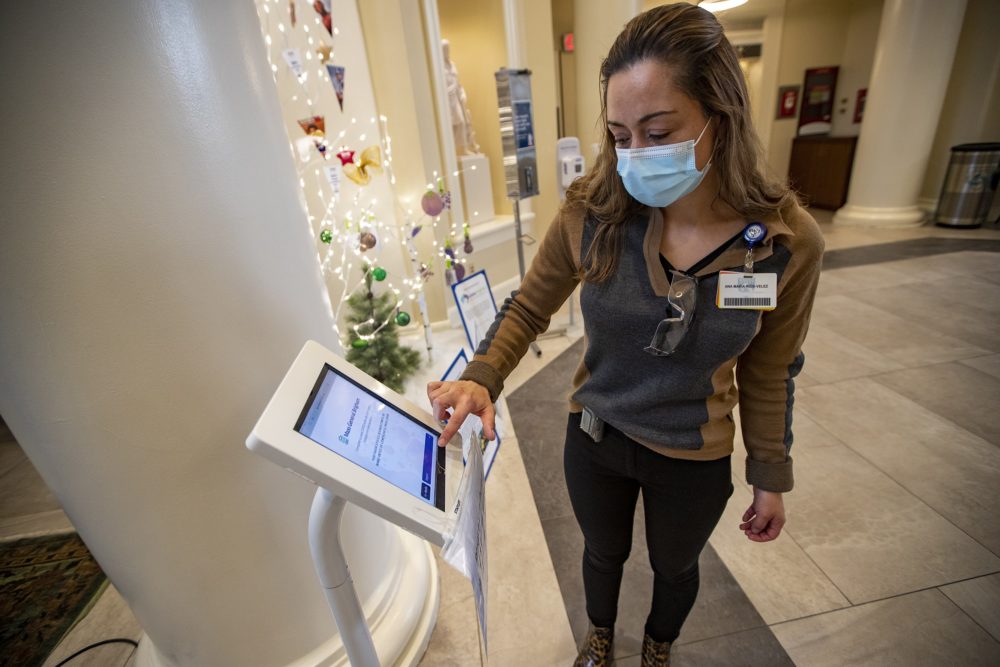With Latinos Dying At Higher Rates From COVID, Brigham And Women’s Hospital Intervenes

Interpreter Ana Maria Rios-Velez demonstrates the screening app at the Brigham and Womens Hospital front entrance which has a multilingual function to better communicate with non-English speaking patients and staff. (Jesse Costa/WBUR)
In March, just weeks into the COVID-19 pandemic, the incident command center at Brigham and Women’s Hospital was scrambling to understand this deadly new disease. It appeared to be killing more Black and brown patients than whites. For Latino patients, there was an additional warning sign.
The warning came from clinicians who couldn’t communicate clearly with patients in the hospital’s COVID units. And it showed up on Brigham patient safety reports that flag concerns about unequal access to care.
“We had an inkling that language was going to be an issue early on,” said Dr. Karthik Sivashanker, Brigham’s medical director for quality, safety and equity. “We were getting safety reports saying language is a problem.”
Sivashanker dove into the records, isolating and layering the unique characteristics of each of the patients who died: their race, age, gender and whether they spoke English.
“That’s where we started to really discover some deeper, previously invisible inequities,” he said.
Inequities that weren’t about race alone.
Read the rest of the story at WBUR’s website.
